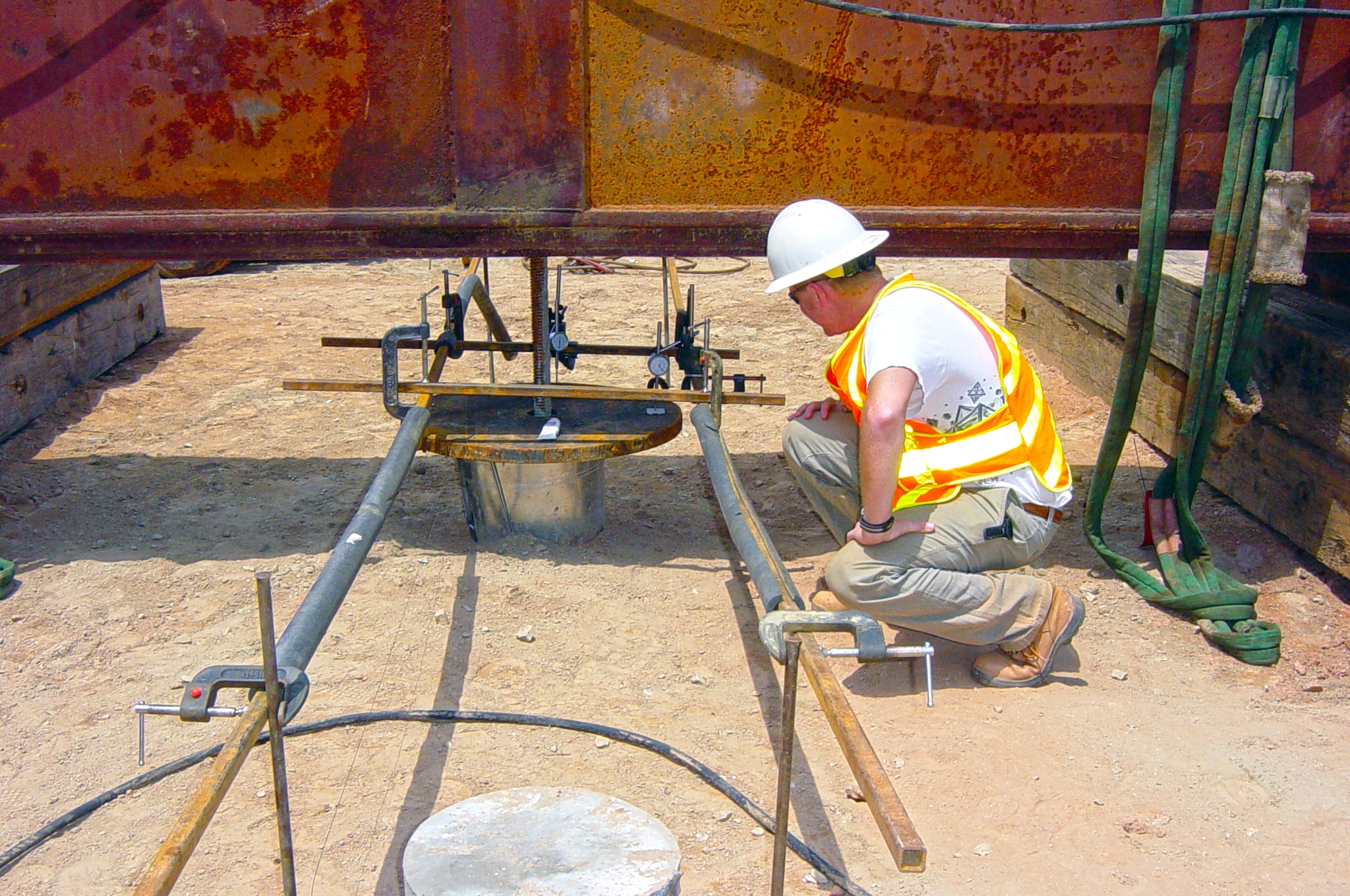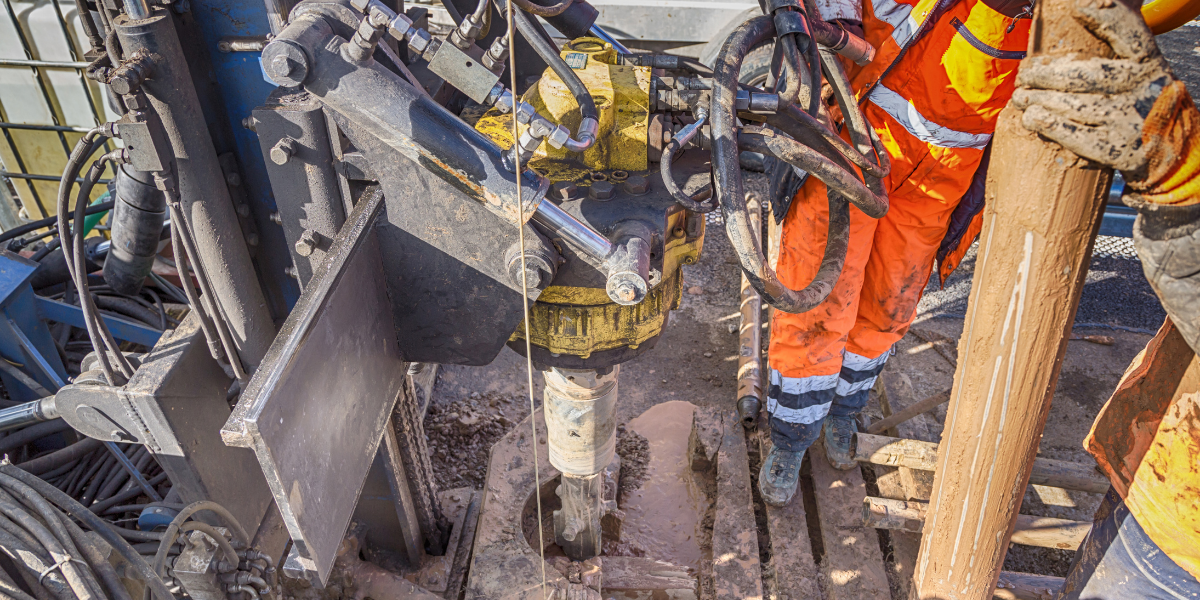Why the Geotechnical Industry Needs Cutting-edge Solutions Currently
Wiki Article
Understanding the Comprehensive Duty of Geotechnical Designers in Ground Examination and Dirt Evaluation for Building And Construction Projects
Geotechnical designers are important to the success of construction jobs, giving necessary insights with comprehensive ground investigations and dirt evaluation. Their competence in examining dirt actions and utilizing advanced testing strategies notifies critical choices that support structural honesty and security. By recognizing prospective threats and working together with multidisciplinary groups, these professionals dramatically influence job end results, consisting of efficiency and cost-effectiveness. The ins and outs of their function often extend beyond these functions, triggering a deeper exploration into the methods they utilize and the effects of their findings on overall project practicality.Role of Geotechnical Designers
The crucial function of geotechnical engineers in construction projects can not be overemphasized, as they give crucial understandings into soil actions and website conditions. These professionals are entrusted with examining the viability of the ground for numerous types of structures, ensuring safety and security and security throughout the building procedure. Their proficiency encompasses a wide variety of activities, consisting of site characterization, soil tasting, and laboratory screening, which are vital for identifying the physical and mechanical homes of the soil.Geotechnical designers utilize their findings to establish foundational styles that fit load-bearing demands and mitigate dangers associated with soil slope, negotiation, and liquefaction security. They play a vital duty in determining possible dangers, such as groundwater variations and contamination, which can dramatically affect task feasibility. They team up with architects, civil engineers, and contractors to guarantee that geotechnical factors to consider are incorporated into the general layout and construction phases.
Ground Investigation Methods
Ground examination strategies form the backbone of geotechnical engineering, allowing designers to gain a detailed understanding of subsurface problems. These strategies are essential for evaluating soil properties, identifying groundwater levels, and determining prospective geological dangers.Usual methods include borehole drilling, which allows for the extraction of soil samples at various depths, providing important data for evaluation. Furthermore, in situ testing strategies, such as Typical Infiltration Examinations (SPT) and Cone Penetration Examinations (CPT), are used to evaluate soil toughness and thickness straight in the ground.
Geophysical methods also play a substantial function in ground investigations. Strategies such as seismic studies and electrical resistivity tomography help assess subsurface characteristics without substantial excavation. geotechnical eng. These non-invasive methods are specifically helpful in large or sensitive locations where disruption have to be lessened
Furthermore, exploratory trenches can be dug deep into to visually examine dirt layers and identify any kind of anomalies. Each of these strategies adds one-of-a-kind understandings, enabling geotechnical designers to develop exact site evaluations and educate style choices. In summary, a combination of these ground examination techniques is crucial for successful building and construction projects, making sure safety and structural honesty.
Soil Analysis Techniques
Dirt analysis methods are vital for comprehending the chemical and physical buildings of soil, which directly affect the layout and construction of foundations and other frameworks. Numerous strategies are employed to evaluate dirt features, ensuring that geotechnical engineers obtain precise information for educated decision-making.One commonly utilized technique is grain dimension evaluation, which figures out the distribution of fragment sizes within a soil sample. This is essential for identifying dirt kinds and predicting their behavior under load. Another essential strategy is Atterberg restrictions screening, which evaluates the plasticity and moisture content of fine-grained soils, providing insights into their design residential properties.

Area tests, such as Typical Penetration Examinations (SPT) and Cone Penetration Tests (CPT), deal useful in-situ data relating to dirt strength and stratification. Jointly, these dirt analysis techniques create the foundation of geotechnical investigation, permitting engineers to develop effective and safe frameworks customized to the specific problems of the website.
Risk Mitigation Methods
Implementing efficient threat mitigation techniques is essential for geotechnical engineers to attend to possible challenges in building jobs. These methods are important in determining, analyzing, and taking care of risks connected with dirt problems, website stability, and groundwater fluctuations, which can adversely influence project results.One key technique includes carrying out complete website examinations that make use of innovative geophysical strategies and comprehensive soil tasting. By getting precise information on subsurface problems, engineers can make educated decisions on style and building techniques. Furthermore, employing predictive modeling devices permits the simulation of numerous circumstances, enabling engineers to predict possible troubles and carry out safety nets.
Additionally, establishing clear communication networks amongst job stakeholders fosters a joint geotech engineer technique to run the risk of administration. Regular updates and consultations ensure that all events recognize the developing site problems and can adapt their strategies as necessary.

Effect On Building Jobs
The performance of risk mitigation strategies directly influences the overall success of construction projects. Geotechnical engineers play a pivotal role in this domain, as their experience in ground examination and dirt evaluation notifies important choices throughout the building process. By precisely evaluating soil conditions and identifying potential hazards, these professionals enable project teams to devise effective remedies that reduce risks linked with ground instability, water seepage, and other geotechnical challenges.The impact of comprehensive geotechnical analysis is obvious in different aspects of construction tasks, consisting of expense administration, project timelines, and architectural stability. Early identification of issues permits timely interventions, decreasing pricey delays and budget plan overruns. A detailed understanding of site problems improves the layout and design procedure, making sure that structures are developed to withstand ecological pressures and potential all-natural calamities.
Ultimately, the contributions of geotechnical designers are indispensable to the effective implementation of building and construction projects. Their job not just cultivates safety and security and compliance with policies yet additionally improves the long-term sustainability of structures, making sure that they perform successfully throughout their desired lifespan. The partnership in between various other stakeholders and geotechnical teams is vital for accomplishing optimal outcomes in construction undertakings.
Verdict
In conclusion, geotechnical designers carry out an important feature in construction jobs with comprehensive ground examinations and soil analyses. Their competence in examining soil behavior, employing numerous investigation techniques, and carrying out risk reduction methods significantly contributes to the structural integrity and safety of built environments. By collaborating with multidisciplinary teams, these professionals enhance task performance and make certain conformity with safety and security criteria, inevitably bring about effective building results and decreased potential hazards.Geotechnical designers are indispensable to the success of building and construction tasks, supplying necessary understandings with detailed ground investigations and soil evaluation.The essential duty of geotechnical engineers in building and construction jobs can not be overstated, as they provide crucial understandings into dirt habits and site problems. Their knowledge encompasses a vast array of tasks, including website characterization, soil tasting, and lab testing, which are essential for establishing the mechanical and physical properties of the dirt.
By accurately analyzing soil problems and determining potential threats, these experts make it possible for job groups to design efficient services that lower dangers linked with ground instability, water infiltration, and various other geotechnical difficulties.
In conclusion, geotechnical designers perform a crucial function in building and construction jobs via detailed ground investigations and soil evaluations.
Report this wiki page